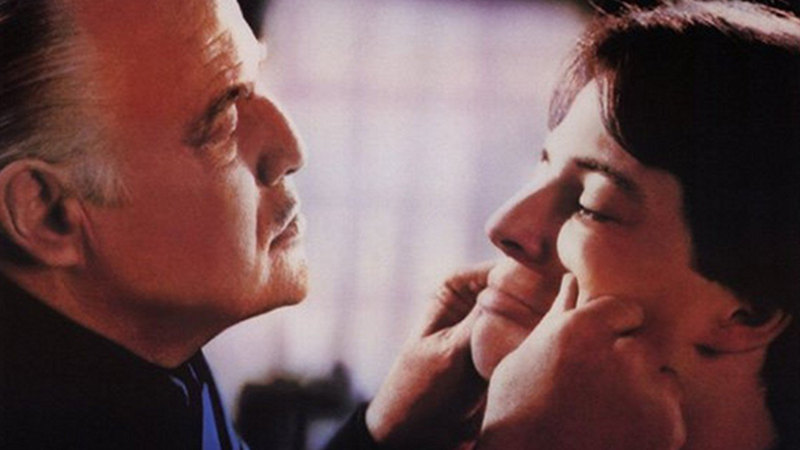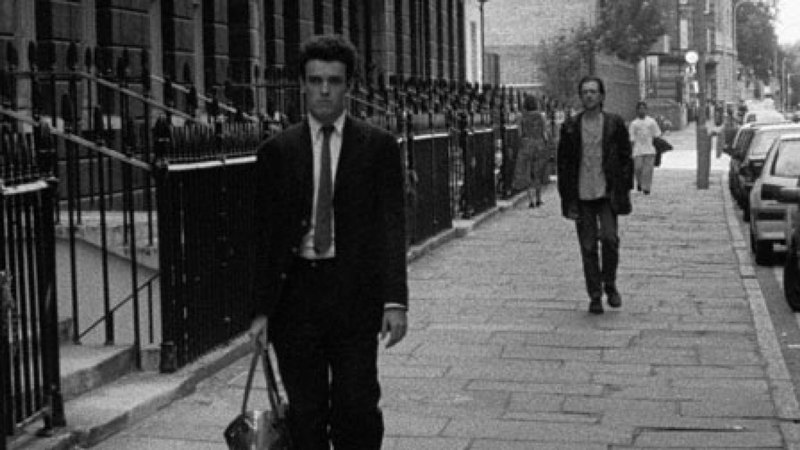The Disney philosophy for its animated features has been fairly simple: make a movie that will appeal to adults as well as children, and balance every laugh with a tear. That changed somewhat with “Beauty and the Beast,” the first animated feature to be nominated for a Best Picture Oscar and actually win a Golden Globe for Best Picture. Producer Don Hahn and directors Gary Trousdale and Kirk Wise fused Broadway-style music and choreography with more intricate backgrounds to create a film more obviously “adult.” With “The Hunchback of Notre Dame,” Disney’s 34th animated feature, that same production team went even further.
Make no mistake: Unlike its lighter, child-friendly direct-to-video sequel, “The Hunchback of Notre Dame” is a mostly adult movie with plenty of dark and somber moments. You can’t begin with a more adult premise than Victor Hugo’s intense drama about a misshapen Notre Dame bell-ringer who is fascinated with a gypsy dancer and publicly ridiculed and flogged. Live-action adaptations of Hugo’s novel have consistently portrayed Quasimodo as more monster than animal and more animal than human, so Disney’s decision to bring Hugo’s character to animated life is surprising, to say the least. But out of great ugliness comes great beauty—at least in the art decoration and backgrounds.
Bell-ringing graphics:
“The Hunchback of Notre Dame” is one of the most beautifully animated full-length features to come out of Disney studios. Though the palette and lighting is often dark to match a dark tone, the style and level of detail are wonderfully realistic—whether it’s the brickwork, tapestries, statuaries, or a cityscape of the medieval town surrounding the cathedral. The production team spent months on location, even taking rubbings of stones from the famed Parisian landmark to ensure accuracy. Paris-based animators also contributed, and the results are backgrounds as exquisite and authentic as Notre Dame’s stained glass or carved gargoyles. The character animation is also perfect, a seamless integration of computer-generated and hand-drawn images in different styles, with inventive transitions and special effects.
But the plot?
Parents, beware!
From the opening scene it’s clear that the subject matter is way too intense for young children—though it was initially marketed as a children’s movie, with Burger King product tie-ins. In the prologue, sung rather than narrated in a style inspired by Latin masses, the genocidal and sexually-repressed villain, Judge Claude Frollo (voiced by Tony Jay), kills Quasimodo’s gypsy mother on the steps of Notre Dame and would have dropped the deformed infant into a well, had the Archdeacon (David Ogden Stiers) not intervened. There are plenty of other adult moments. In one of the strangest, following a scene where Quasimodo (Tom Hulce) sings of his unrequited love for gypsy dancer Esmeralda (Demi Moore) and his innocent hope for someone to love him, defects and all, Frollo stares into a fire and, seeing her writhing before him, sings about his lust for the gypsy dancer. He leers at her image and blames her for his sinful desires, vowing to send her to hell, where she belongs.
Then there’s the scene where Quasimodo is crowned King of Fools on Topsy Turvy Day, lashed to the pillory wheel and pelted with fruits and vegetables. It’s incredibly intense, as is a scene where Frollo bars the door of a peasant home and sets fire to it with the family inside. More than a few scenes involve trauma or near-executions, and in the just-plain-creepy department there’s a scene where Frollo fondles Esmeralda’s hair, and the puppetmaster-narrator Clopin (Paul Kandel) is unexplainably sinister throughout.
Comic relief?
Young viewers may also find it disturbing that Quasimodo’s cartoonish gargoyle friends sing how Esmeralda can’t help but fall for “A Guy Like You,” only to set up a big fall moments later when he sees the object of his affection kiss Phoebus (Kevin Kline), the new captain of the guard who bravely defies Frollo. There are so many tense moments in the film that any attempts at comic relief seem strained and incongruous, especially in scenes involving the Three Stooges-style team of gargoyles (Jason Alexander, Charles Kimbrough, Mary Wickes). Comic moments featuring Esmeralda’s pet goat are funnier, as is a running gag involving an imprisoned old man who keeps getting set free momentarily, only to find himself shackled or caged again. But as funny as those moments are, so much of the film is so atmospherically brooding and sinister that the comic relief isn’t enough to balance all the darkness and tragedy. What’s more, it’s not just objectionable content that makes it a tough sell with kids—it’s slow scene after slow scene, with dolorous songs adding to the dirge-like tone. Yes, the pace (and interest) picks up the second half, but by then the attention of young family members might already have been left behind.
The little sequel that couldn’t:
It’s almost as if the Disney folks were trying to overcompensate for the first film being so dark and tragic and adult in nature, because “The Hunchback of Notre Dame II” is pitched at kids and looks and feels like a extended Saturday morning cartoon. After stiffing poor Quasimodo in the 1996 film, the 2002 sequel gives him a legitimate place in Parisian society and an actual love interest. How’s that for Disneyfying Hugo? The plot, though, is a fairly standard story about a traveling carnival and the troupe master (dressed like a harlequin to echo the puppeteer from the original film) who uses their performances in town as a cover for a thievery operation. In Paris, his target is the biggest bell of Notre Dame—though his assistant, Madelline (Jennifer Love Hewitt), is having second thoughts. So will viewers. It just doesn’t ring true.
Video:
“The Hunchback of Notre Dame” was always a dark film, but it’s almost murky-looking in scenes that are meant to approximate nightfall. There’s a little crush in the shadows, but I didn’t notice any compression artifacts that would point a finger at the AVC/MPEG-4 or MVC/MPEG-4 transfer. A deliberately fine layer of filmic grain can’t hide the impressive level of detail in the brighter daytime scenes. Textures and panoramic shots are especially lovely. “The Hunchback of Notre Dame” is presented in 1.78:1 aspect ratio, while the much brighter, almost pastel-looking sequel is presented in 1.66:1 widescreen. To my eyes, though, the first film seemed under lit, while the second suffered from overexposure.
Audio:
The audio on both Blu-ray films is an English DTS-HD MA 5.1, with additional audio options in English Dolby Digital 2.0, Spanish and French Dolby Digital 5.1, and subtitles in English SDH, Spanish and French. I wouldn’t call either of the soundtracks fully immersive, but when the songs fire up, so do the speakers.
Extras:
The best of the bonus features is a wonderful commentary by Hahn, Trousdale, and Wise, who serve up a gargoyle routine of their own–combining self-depracating humor with substantial behind-the-scenes insights (as with the revelation that all of the crowd scenes were done with just six character types, manipulated with different dress and hair colors to look like different characters). They point out that Phoebus is the first Disney hero to have facial hair (I guess Davy Crockett’s five-day stubble didn’t count), and that it’s also unlike typical Disney fare in that there are numerous references to God and prayer. “Look for Belle from Beauty in the Beast in the next scene,” they remark. “It’s one of our little jokes.” Another of their jokes was putting a satellite dish on the roof of one 15th century apartment, and they point out the scene where it occurs. As Phoebus is wounded and falls from a bridge, one of them laughs, “Notice how Phoebus is shot in the shoulder, but he grabs his chest?” And in a scene where Quasi scales a cathedral spire to sing, one quips, “That’s our combination Singin’ in the Rain / King Kong shot.” It’s an entertaining way to re-view the film.
I can’t say the rest of the bonus features are bell-ringing. There’s just one substantial “Making of The Hunchback of Notre Dame” feature on the Blu-ray, plus a multi-language reel for “A Guy Like You,” a behind-the-scenes promo piece with Jennifer Love Hewitt, and “A Gargoyle’s Life,” which focuses on the comic trio. The making-of feature also appears on the DVD, while Love Hewitt takes people behind the scenes again on the DVD of the sequel.
Bottom line:
Despite some terrific background art and exquisite detail, “The Hunchback of Notre Dame” tries to tack comic relief onto a tragic story and knocks it tonally out-of-whack in the process. I suspect that Victor Hugo’s novel exerted too powerful an influence, and the sequel seemed an act of penance to atone for giving families such a dark and tragic animated feature. The first film, despite its flaws, is still accomplished enough to rate a 7/10, but the sequel is a run-of-the-mill production that only merits a 5—so the 6 I’ve awarded this two-movie collection is an average.


